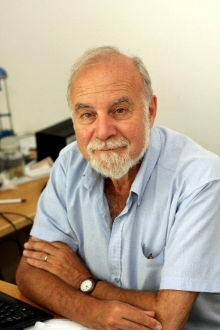INCREASING THE FLOW OF CAPITAL FOR GOOD - INVESTING AND GIVING

Some 15 years ago, after a period as CEO of a major family foundation in Melbourne, Australia, I took to the business school of a local university the idea that a centre for the study of philanthropy and social investment be established. My rationale at the time was that in Australia, and elsewhere, the giving of private funds for public good was very much a personal, ‘feel good’, and often self-congratulatory matter, lacking almost all of the strategy, rigour, assessment and accountability of comparable financial investment, and therefore often not achieving optimal impact.
My main purpose, therefore, was to introduce reflectiveness and discipline into philanthropic practice. For our students, this led to them being told in their very first class – possibly to their dismay – that the entire learning journey to which they had just committed considerable time and expense could be reduced to a four-word mantra: ‘promote outcomes, not intentions’!
Although I didn’t appreciate it at the time, far from being a lone voice – as the challenges I faced in gaining acceptance for the idea initially led me to feel – I was part (perhaps in the vanguard) of a larger Zeitgeist which has transformed the field in the subsequent years. Now strategic philanthropy, impact assessment, return on investment, theories of changes, impact investment, and the like, are commonplace, almost de rigueur, and supported by a wealth of resources, tools, training materials, short courses and conferences. This is great progress, to be welcomed, encouraged and consolidated.
But some challenges remain. Methodological and conceptual questions about the capacity of interventions in the long term, multi-factored social issues to be effectively evaluated and causation reliably attributed abound. The better practitioners and analysts grapple with these questions intelligently and honestly; others use the language and tools of impact assessment in less convincing ways.
Overall, though, there has been little short of a transformation in the philanthropic sector, and, rightly, recipients of social investment funds are expected to submit to the requirements of impact assessment and return on investment in a way virtually unknown even a decade ago.
The aspect of this that now intrigues me is how the investor – as distinct from the investee – experiences this rather different atmosphere. Does the investor, especially the personal donor who remains the backbone of philanthropy, understand and support the much more hard-headed approach now expected of his or her investment decisions? And, importantly, will there be the sort of satisfactions in this approach which will sustain an ongoing commitment to giving?
The real meaning of this question is brought home to me very immediately in a class I teach on ‘personal and family philanthropy’. In the first session of that class, I invite students to do some of the exercises in Tracy Gary’s popular book, Inspired Philanthropy. Gary is an enthusiastic advocate of engaged and passionate giving, in which the donor is in touch with, and gives expression to, the experiences, values and feelings which most strongly affect them, and her book contains a range of clever self-survey instruments for people to use to explore their passions. Most students seem to discover that their own giving is indeed personal, emotional and circumstantial; some are heartened, and others a little surprised, by the extent of this.
In the next session we look at the very different approach currently popularised by Peter Singer in Effective Altruism, and by Givewell. This approach is unapologetically hard-headed, unsentimental, impersonal and analytic – to the extent that Singer argues against most arts funding, and proposes that donors in privileged nations such as Australia should not give within their own country but only to undeveloped regions.
Students’ response to this is fascinating. Some are open to its challenging logic, but hardly any are able to act on its implications. Almost invariably they feel unable to resist the pull of family and friends, local community, immediate need and distress, and their own experiences, preferences and values, in shaping their giving. They are troubled by the difficulty they experience in mounting theoretical challenges to the formidable logic of the case for effective giving but usually cannot escape their own loyalties and passions. This is the classic ‘head/heart’ tension which underlies the field of philanthropy – and so many other domains – and explains so much of its characteristics: its resistance to study, its frequently limited effectiveness and the depth of feeling it generates. It seems to me that as the understanding of the importance of effective philanthropy matures, the challenge that must not be overlooked in reconciling money and mission is just this.
This challenge has been addressed by some commentators, and especially well by Peter Frumkin in his Strategic Philanthropy: the Art and Science of Giving. The central premise of his work is ‘finding a way to maximise both the public benefits of giving and the private fulfilment of donor; not just to secure the continued flow of funds into philanthropy, but also to ensure that private giving in all its idiosyncratic forms continues to play a vital role in supporting pluralism in society’ (2006:ix). It is beyond the scope of this short contribution to prescribe how this is to be done: simply to note its importance and stress that social investment is as serious and complex an endeavour as any other, and that neither head nor heart alone can do the job.





